History
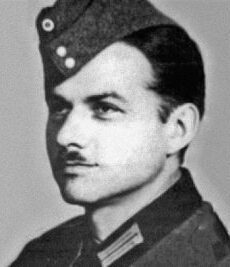
 It seems highly unlikely that the United States would consider any of the German tactics from World War II to be useful or moral, but that is exactly what they thought of the Luftwaffe’s master interrogator, Hanns Scharff, whose interrogation tactic was…to be as nice as possible. Nice?? That word doesn’t really fit in with the picture most of us carry in our brain of the Nazi war machine. And even from what we see on television, interrogation is more of a verbally brutal assault on the senses, that breaks a person down so that they finally relent and give the interrogator the information they are asking for.
It seems highly unlikely that the United States would consider any of the German tactics from World War II to be useful or moral, but that is exactly what they thought of the Luftwaffe’s master interrogator, Hanns Scharff, whose interrogation tactic was…to be as nice as possible. Nice?? That word doesn’t really fit in with the picture most of us carry in our brain of the Nazi war machine. And even from what we see on television, interrogation is more of a verbally brutal assault on the senses, that breaks a person down so that they finally relent and give the interrogator the information they are asking for.
For getting information out of prisoners, Scharff’s best tactics included…nature walks without guards present, baking them homemade food, cracking jokes, drinking beers, and afternoon tea with German fighter aces. When I read that, I was totally stunned. Who would have ever considered such things to glean information out of a prisoner of war, or any kind of prisoner. Nevertheless, Scharff’s techniques were so successful that following World War II, the United States military incorporated his methods into their own interrogation schools.
Hanns-Joachim Gottlob Scharff was born on December 16, 1907 in Rastenburg, East Prussia, which is now K?trzyn, Poland, to Hans Hermann Scharf and Else Scharf (née Jahn). He was the second of three sons, the elder being Eberhardt and the younger, Wolfgang (who died in his teens). The last name was originally Scharf, but Hanns Scharff added an extra ‘f’ to the end of his last name as an adult, because some ancestors spelled their last names that way, and he thought it might be the correct spelling, which is something I have come across in my own family research as well.
Scharff was nicknamed the “Master Interrogator” of the Luftwaffe, and possibly of all Nazi Germany. he has also been praised for his contribution in shaping US interrogation techniques after the war. As an Obergefreiter…basically a Private First Class, he was charged with interrogating captured American fighter pilots, becoming an interrogation officer in 1943. He has been highly praised for the success of his techniques, in particular because he never used physical means to obtain the required information. Scharff’s interrogation techniques were so effective that he was occasionally called upon to assist other German interrogators in their questioning of bomber pilots and aircrews, including those crews and fighter pilots from countries other than the United States. Additionally, he was charged with questioning many more important prisoners who were funneled through the interrogation center, such as senior officers and famous fighter aces. I am not saying that because of this man’s techniques, all captured airmen gave up the information, just that what information they gave was not beaten out of them.
While training in the family business, and on a business trip to South Africa, Scharff met and married a South African British woman named Margaret Stokes. Margaret was the daughter of Captain Claud Stokes, first a pilot in Rhodesia in 1913, and later a squadron leader in the Royal Flying Corps. In 1939, the couple and their children went back to Germany for a vacation when WWII broke out. So now they were stuck. Scharff, was a German citizen, which put him in the army. While being drafted was not what they wanted, it did change who Scharff was…forever.
In 1948, Scharff was invited by the United States Air Force to give lectures on his interrogation techniques and first-hand experiences. The US military later incorporated his methods into its curriculum at its interrogation schools. Many of his methods are still taught in US Army interrogation schools. Scharff was granted immigration status. From the 1950s until his death on September 10, 1992, Scharff decided that he wanted to have a more gentle life, so he redirected his efforts to the creation of mosaics. He became a world-renowned 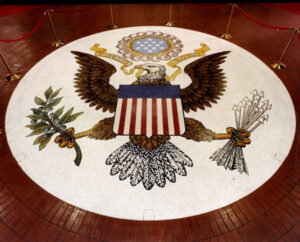
 mosaic artisan, with his handiwork on display in locations worldwide, like the California State Capitol building; Los Angeles City Hall; several schools, colleges, and universities, including the giant Outdoor Mosaic Mural facade of the Dixie State College; Fine Arts Center; Epcot Center; and in the 15-foot arched mosaic walls featuring the story of Cinderella; Cinderella Castle; Walt Disney World, Florida.
mosaic artisan, with his handiwork on display in locations worldwide, like the California State Capitol building; Los Angeles City Hall; several schools, colleges, and universities, including the giant Outdoor Mosaic Mural facade of the Dixie State College; Fine Arts Center; Epcot Center; and in the 15-foot arched mosaic walls featuring the story of Cinderella; Cinderella Castle; Walt Disney World, Florida.
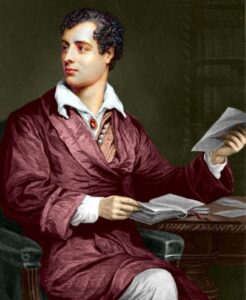 I think most of us have heard of the famous British poet and politician, Lord George Gordon Byron, who took his education at Trinity College in Cambridge…a college that boasts famous alumni, Prince Charles, Sir Isaac Newton, Lord Tennyson, King Edward VII, and King George VI, among many others. Lord Byron was well known for his romantic poetry, but he was also a rebel and would probably be considered a scoundrel.
I think most of us have heard of the famous British poet and politician, Lord George Gordon Byron, who took his education at Trinity College in Cambridge…a college that boasts famous alumni, Prince Charles, Sir Isaac Newton, Lord Tennyson, King Edward VII, and King George VI, among many others. Lord Byron was well known for his romantic poetry, but he was also a rebel and would probably be considered a scoundrel.
Trinity College has a strict rule for it’s attendees. No dogs were allowed to be kept in the dormitory, a rule that seriously upset Lord Byron, who had a dog that he really loved and wanted to bring to college with him. Most college campuses do not allow their residents to have pets, other than non-predatory fish, in the on-campus dorms. This is something most college students do not like or agree with, so Lord Byron was not alone in his annoyance. Lord Byron took things to a bit of the extreme, however, when it came to his rebellion, and I really don’t see how he got away with what he did. Lord Byron was known for being an avid animal lover, and when the college refused to allow him to bring his dog, he retaliated by bringing a pet bear in his dormitory!! I have no idea why the school didn’t put a stop to that, but they didn’t. He was even known to take it on walks with a leash!!
I have no idea why he wanted a bear, but if you think this is just a rumor, you are wrong. Lord Byron did indeed keep a pet bear, and not simply because he wanted to or he admired the strength of bears. He had a kind of symbolic or romantic reasoning for doing it. Lord Byron was quite devious, and his reason for having a pet bear at Trinity College was simply one of rebellion. He was known to say, “I have got a new friend, the finest in the world, a tame bear.”
Lord Byron was born in 1788 and throughout his life, he was constantly bucking norms. He had a tumultuous life from a very troubled childhood to being a literary icon by age 20. He was known for his indulgences, affairs, and many pranks which constantly got him in trouble. Nevertheless, even though he was always in the middle of a controversy and known bucking the norms, he also had a soft side for animals. In fact, he was a lifelong animal lover and kept countless dogs and cats throughout his troubled childhood. He even dabbled in exotic animals throughout his life like a monkey, a fox, peacocks, badgers, and a crocodile…and don’t forget the bear. Still, the pet he loved the most was his Newfoundland dog Boatswain? who died in 1808 from rabies. He loved the dog so much he wrote a poem dedicated to him entitled ?”Epitaph to a Dog?” and he even requested to be buried beside Boatswain in his will.
It seems that while Lord Byron was a poet by trade, he could have been a pretty good attorney…if the argument was something he cared about. The dog he had wanted to bring to Trinity College was a bulldog named Smut. As I said, he had a lot of pets. Since the college wouldn’t let him do as he chose, he went looking for loophole. It didn’t take him long to find what he was looking for…that there was no rule against having a tamed pet bear to the campus. So Byron argued with the college officials that he had every legal right to bring the bear. I don’t know if he was shocked, but I would be. Maybe the figured he was bluffing and didn’t really have a pet bear. If that was the case, they were very wrong, because he did, and he willingly produced it.
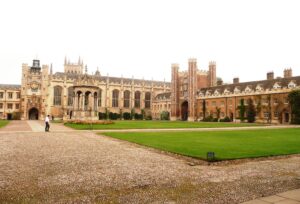
No one really knows where Lord Byron got the bear or what its name was, but he walked the bear on a chain as if it were a dog and would talk to it the way people talk to their pets. It was said that he allegedly wanted to have the bear apply as a student at the college since there were also no rules explicitly saying that bears cannot be students, but this may have been an example of Lord Byron’s sense of humor…or maybe he didn’t want to pay the tuition for a “student” who would not study or have any chance at passing. When he left school, he took the bear with him to London where it was free to roam the estate grounds. It was joined at the estate by Byron’s other pet…a wolf. Wow…just wow!!
 What would you do if your life had been ripped apart by a group of people who really knew nothing about you or your people, but hated you and them anyway. That was the position in which Joseph Harmatz found himself. Born in Rokiškis, Lithuania into a prosperous family, Harmatz and his family were transferred to the Vilnius Ghetto on January 23, 1925, after the occupation of Lithuania by Nazi Germany. It was the worst time in his life. His youngest brother and all of his grandparents were killed and his older brother died during a military action. His despondent father committed suicide. Harmatz was left alone with his mother at the age of 16. He couldn’t stand the way things were, so he left the ghetto through the sewers and joined a band of guerrillas fighting the Nazis. Harmatz managed to survive the Holocaust, and after the war, he became part of Nakam (Hebrew for Revenge) also known as the Avengers. The Nakam was a group of 50 former underground fighters led by Abba Kovner. Their goal was to avenge the deaths of the six million Jewish victims of Nazi extermination efforts in the Holocaust. The true goal according to Harmatz was to facilitate the death of as many Germans as possible, with the group planning “to kill six million Germans, one for every Jew slaughtered by the Germans,” acknowledging that the effort “was revenge, quite simply. Were we not entitled to our revenge, too?”
What would you do if your life had been ripped apart by a group of people who really knew nothing about you or your people, but hated you and them anyway. That was the position in which Joseph Harmatz found himself. Born in Rokiškis, Lithuania into a prosperous family, Harmatz and his family were transferred to the Vilnius Ghetto on January 23, 1925, after the occupation of Lithuania by Nazi Germany. It was the worst time in his life. His youngest brother and all of his grandparents were killed and his older brother died during a military action. His despondent father committed suicide. Harmatz was left alone with his mother at the age of 16. He couldn’t stand the way things were, so he left the ghetto through the sewers and joined a band of guerrillas fighting the Nazis. Harmatz managed to survive the Holocaust, and after the war, he became part of Nakam (Hebrew for Revenge) also known as the Avengers. The Nakam was a group of 50 former underground fighters led by Abba Kovner. Their goal was to avenge the deaths of the six million Jewish victims of Nazi extermination efforts in the Holocaust. The true goal according to Harmatz was to facilitate the death of as many Germans as possible, with the group planning “to kill six million Germans, one for every Jew slaughtered by the Germans,” acknowledging that the effort “was revenge, quite simply. Were we not entitled to our revenge, too?”
Their main target was Stalag XIII-D, a prisoner-of-war camp built on what had been the Nazi party rally grounds in Nuremberg. Interned in the camp were 12,000 members of the SS (Schutzstaffel or Protection Squads). These prisoners were involved in running concentration camps and other aspects of the Final 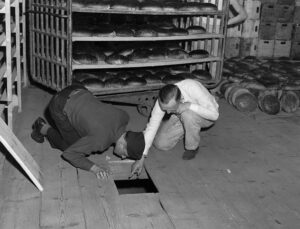 Solution…Nazi Germany’s horrific policy of deliberate and systematic genocide across German-occupied Europe. In April 1946, a member of the Nakam got a job as a baker, and he had a plan. He baked arsenic into 3,000 loaves of bread that were to be fed to the prisoners. Nearly 2,000 prisoners became ill and were thought to be seriously ill. American authorities thought that the arsenic had got onto the crust of the bread by accident, having been used as an insecticide in the wheat fields. During the investigation, United States Army investigators found enough arsenic to have killed 60,000 people and Nakam claimed they had killed several hundred victims, but declassified documents obtained by Associated Press in 2016 stated there were no casualties.
Solution…Nazi Germany’s horrific policy of deliberate and systematic genocide across German-occupied Europe. In April 1946, a member of the Nakam got a job as a baker, and he had a plan. He baked arsenic into 3,000 loaves of bread that were to be fed to the prisoners. Nearly 2,000 prisoners became ill and were thought to be seriously ill. American authorities thought that the arsenic had got onto the crust of the bread by accident, having been used as an insecticide in the wheat fields. During the investigation, United States Army investigators found enough arsenic to have killed 60,000 people and Nakam claimed they had killed several hundred victims, but declassified documents obtained by Associated Press in 2016 stated there were no casualties.
According to Harmatz’s son, his father had no regret for his attempts to kill the German prisoners. He said he was only “sorry that it didn’t work.” Harmatz wrote a book in 1998, called “From the Wings” in which he stated that the poisoning plot had the approval of Chaim Weizmann, though David Ben-Gurion and Zalman Shazar were both against the plan. An earlier attempt to poison the water in a number of German cities failed after  Kovner was arrested by British forces on a ship on which the poison had been hidden, and had been thrown overboard to prevent its capture. The group was so filled with hatred that they wanted all Germans killed, even if they had nothing to do with the Holocaust. Looking back, after much soul searching, Harmatz was thankful that the plot to poison the water supplies in German cities had failed, saying that it “would have harmed efforts to create an incipient State of Israel and would have led to charges of moral equivalence between actions of Germans and Jews. Another effort to kill Nazi war criminals on trial at Nuremberg failed when the group was unable to find any US Army guards willing to participate.”
Kovner was arrested by British forces on a ship on which the poison had been hidden, and had been thrown overboard to prevent its capture. The group was so filled with hatred that they wanted all Germans killed, even if they had nothing to do with the Holocaust. Looking back, after much soul searching, Harmatz was thankful that the plot to poison the water supplies in German cities had failed, saying that it “would have harmed efforts to create an incipient State of Israel and would have led to charges of moral equivalence between actions of Germans and Jews. Another effort to kill Nazi war criminals on trial at Nuremberg failed when the group was unable to find any US Army guards willing to participate.”
Harmatz emigrated to Israel in 1950, and worked to aid Jews resettling from countries around the world. He headed World ORT, a Jewish non-profit organization that promotes education and training in communities around the world, from 1960 to 1994. A long-time resident of Tel Aviv, Harmatz died at at his home on September 22, 2016. He was 91 years old, and was survived by two sons.
 On June 18, 1972, a Trident jetliner in perfect condition, crashed into the outskirts of the town of Staines, Surrey, England, after takeoff from Heathrow Airport in London, killing 118 people. The crash became known as the Staines air disaster. How could this happen? There was nothing wrong with the airplane. It was not shot down. It was not a terrorist attack or a hijacking and the official cause of the accident remains unknown. Nevertheless, something happened. The aircraft went into a deep stall in the third minute of its flight and crashed to the ground, narrowly missing a busy main road. The public inquiry principally blamed the captain for failing to maintain airspeed and configure the high-lift devices correctly. It also cited the captain’s heart condition and the limited experience of the co-pilot, while noting an unspecified “technical problem” that the crew apparently resolved before take-off.
On June 18, 1972, a Trident jetliner in perfect condition, crashed into the outskirts of the town of Staines, Surrey, England, after takeoff from Heathrow Airport in London, killing 118 people. The crash became known as the Staines air disaster. How could this happen? There was nothing wrong with the airplane. It was not shot down. It was not a terrorist attack or a hijacking and the official cause of the accident remains unknown. Nevertheless, something happened. The aircraft went into a deep stall in the third minute of its flight and crashed to the ground, narrowly missing a busy main road. The public inquiry principally blamed the captain for failing to maintain airspeed and configure the high-lift devices correctly. It also cited the captain’s heart condition and the limited experience of the co-pilot, while noting an unspecified “technical problem” that the crew apparently resolved before take-off.
The summer of 1972 brought with it, serious problems facing the air-travel industry. Pilots were threatening to strike any day due to lack of security. Hijackings were becoming more common every day, and pilots were often the target of the attacks during a hijacking, so they were feeling particularly vulnerable. Nevertheless, none of the feared causes seemed to be the reason for the crash.
Everything was running smoothly that day at Heathrow Airport outside of London. British European Airways morning flight number 548 to Brussels was full and weather conditions were perfect. The Trident 1 jet took off with no incident, then just after its wheels retracted, it began simply falling from the sky. On impact the plane split and an intense fireball from the plane’s fully loaded fuel supply exploded, scattering the fuselage and passengers. Of the 118 passengers and crew members on board, only two were pulled from the wreckage alive. Both of these died a short time later.
After a thorough investigation failed to produce any clear reason for the crash, or any real reason at all, the investigators were left with speculation. The investigators’ best guess concerning the cause of the crash was that the jet was either carrying too much weight or that the weight was improperly distributed and the plane could not handle the stress. The only possible clue to the probable cause of the crash happened at 3:36pm, when flight dispatcher J Coleman presented the load sheet to Captain Stanley Key whose request for engine  start clearance was granted three minutes later. Then, as the doors were about to close, Coleman asked Key to accommodate a BEA flight crew that had to collect a Merchantman aircraft from Brussels. The request was granted, but the additional weight of the three crew members necessitated the removal of a quantity of mail and freight from the Trident to ensure its total weight (less fuel) did not exceed the permitted maximum of 91,998 pounds. This was exceeded by 53 pounds, but as there had been considerable fuel burn-off between startup and takeoff, the total aircraft weight (including fuel) was within the maximum permitted take-off weight. So they assumed that everything was fine. There is still no confirmation that overloading was the problem, but it is the only thing that was questionable, and whatever the cause, it cost 118 people their lives that day.
start clearance was granted three minutes later. Then, as the doors were about to close, Coleman asked Key to accommodate a BEA flight crew that had to collect a Merchantman aircraft from Brussels. The request was granted, but the additional weight of the three crew members necessitated the removal of a quantity of mail and freight from the Trident to ensure its total weight (less fuel) did not exceed the permitted maximum of 91,998 pounds. This was exceeded by 53 pounds, but as there had been considerable fuel burn-off between startup and takeoff, the total aircraft weight (including fuel) was within the maximum permitted take-off weight. So they assumed that everything was fine. There is still no confirmation that overloading was the problem, but it is the only thing that was questionable, and whatever the cause, it cost 118 people their lives that day.
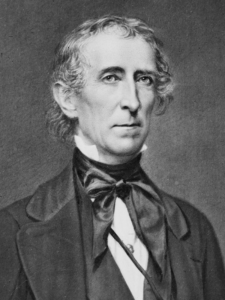 John Tyler, the tenth president of the United States, was born on March 29, 1790 in Virginia to John Tyler Sr and Mary Marot (Armistead) Tyler. He had two brothers and five sisters, but his mother died of a stroke in 1797 when John was seven years old. I can’t imagine how hard it was on young John to lose his mother. That wasn’t the only hard part of his youth. John was frail and sickly most his young life. Considering the start he had in life, it would not seem likely that John Tyler’s life would have amounted to much…but those who think that would be wrong.
John Tyler, the tenth president of the United States, was born on March 29, 1790 in Virginia to John Tyler Sr and Mary Marot (Armistead) Tyler. He had two brothers and five sisters, but his mother died of a stroke in 1797 when John was seven years old. I can’t imagine how hard it was on young John to lose his mother. That wasn’t the only hard part of his youth. John was frail and sickly most his young life. Considering the start he had in life, it would not seem likely that John Tyler’s life would have amounted to much…but those who think that would be wrong.
John Tyler came from a political family, and he was destined for the presidency. Tyler was admitted to the Virginia bar at the age of 19. He was actually too young to be eligible, but the admitting judge neglected to ask his age. By this time, his father was Governor of Virginia (1808–1811), and John Tyler Jr started a legal practice in Richmond, the state capital. In 1811, at just 21 years of age, Tyler was elected to represent Charles City County in the Virginia House of Delegates, an office he held for five successive one-year terms. As a state legislator, Tyler sat on the Courts and Justice Committee. Following the War of 1812, Tyler’s father died in 1813, and Tyler inherited thirteen slaves along with his father’s plantation. In 1816, he resigned his legislative seat to serve on the Governor’s Council of State, a group of eight advisers elected by the General Assembly. He then ran for the US House of Representatives, narrowly winning the election. Later he served in the US Senate, before being elected as Vice-President of the United States under William Henry Harrison. Harrison served from March 4, 1841 to his death on April 4, 1841, after which John Tyler took over serving until March 4, 1845.
You might think that Tyler’s political career was the defining point in his life, but he is actually known for something much more surprising. Tyler fathered more children than any other American president, but it isn’t even that fact that is so surprising. His first wife was Letitia Christian and together they had eight children, 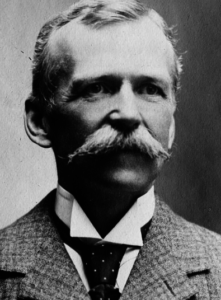 Mary (1815–1847), Robert (1816–1877), John (1819–1896), Letitia (1821–1907), Elizabeth (1823–1850), Anne (1825–1825), Alice (1827–1854) and Tazewell (1830–1874).. She died of a stroke while they lived in the White House in September 1842. He married again on June 26, 1844, to Julia Gardiner (July 23, 1820 – July 10, 1889), with whom he had seven children, David (1846–1927), John Alexander (1848–1883), Julia (1849–1871), Lachlan (1851–1902), Lyon (1853–1935), Robert Fitzwalter (1856–1927) and Pearl (1860–1947). Tyler’s son, Lyon was born when Tyler was 63 years, and while he was not his youngest child, it would be Lyon who would bring about the thing that really makes Tyler something special. Lyon would go on to father two sons of his own…one when he was 71 and one when he was 75. One of those sons, Harrison Ruffin Tyler is still alive, meaning that John Tyler, tenth president of the United States, who was born in 1790, has a grandson who is still alive in 2021. His older brother, Lyon Gardiner Tyler Jr passed away in September of 2020. The fact that their great grandfather was the tenth president, is unbelievable to the children of Lyon’s sons.
Mary (1815–1847), Robert (1816–1877), John (1819–1896), Letitia (1821–1907), Elizabeth (1823–1850), Anne (1825–1825), Alice (1827–1854) and Tazewell (1830–1874).. She died of a stroke while they lived in the White House in September 1842. He married again on June 26, 1844, to Julia Gardiner (July 23, 1820 – July 10, 1889), with whom he had seven children, David (1846–1927), John Alexander (1848–1883), Julia (1849–1871), Lachlan (1851–1902), Lyon (1853–1935), Robert Fitzwalter (1856–1927) and Pearl (1860–1947). Tyler’s son, Lyon was born when Tyler was 63 years, and while he was not his youngest child, it would be Lyon who would bring about the thing that really makes Tyler something special. Lyon would go on to father two sons of his own…one when he was 71 and one when he was 75. One of those sons, Harrison Ruffin Tyler is still alive, meaning that John Tyler, tenth president of the United States, who was born in 1790, has a grandson who is still alive in 2021. His older brother, Lyon Gardiner Tyler Jr passed away in September of 2020. The fact that their great grandfather was the tenth president, is unbelievable to the children of Lyon’s sons.

 A few days ago, my friends, Rikki and Tony Ramsey (who is stationed in Germany) and their three sons, Jameson, Jackson, and Jordan posted some pictures of a trip they took to Salzburg, Austria. On the way there, they went to a place in the mountains, and posted pictures of them in front of a large cross. It was the cross that caught my eye, but the story of the place that held my interest. In English the place is called the Eagle’s Nest, but in German it is the Kehlsteinhaus and it is a building and cross erected by the Third Reich atop the summit of the Kehlstein, a rocky outcrop that rises above Obersalzberg near the town of Berchtesgaden. This was not a church or a fancy mountain-top resort or restaurant…at least not then. It was used exclusively by members of the Nazi Party for government and social meetings, and was visited on 14 documented instances by Adolf Hitler, who disliked the location due to his fear of heights, the risk of bad weather, and the thin mountain air. Today, the building is owned by a charitable trust and is open seasonally to the public as a restaurant, beer garden, and tourist site. I’m sure Hitler would be furious about that.
A few days ago, my friends, Rikki and Tony Ramsey (who is stationed in Germany) and their three sons, Jameson, Jackson, and Jordan posted some pictures of a trip they took to Salzburg, Austria. On the way there, they went to a place in the mountains, and posted pictures of them in front of a large cross. It was the cross that caught my eye, but the story of the place that held my interest. In English the place is called the Eagle’s Nest, but in German it is the Kehlsteinhaus and it is a building and cross erected by the Third Reich atop the summit of the Kehlstein, a rocky outcrop that rises above Obersalzberg near the town of Berchtesgaden. This was not a church or a fancy mountain-top resort or restaurant…at least not then. It was used exclusively by members of the Nazi Party for government and social meetings, and was visited on 14 documented instances by Adolf Hitler, who disliked the location due to his fear of heights, the risk of bad weather, and the thin mountain air. Today, the building is owned by a charitable trust and is open seasonally to the public as a restaurant, beer garden, and tourist site. I’m sure Hitler would be furious about that.
The Kehlsteinhaus is located on a ridge atop the Kehlstein, a 6,017 feet subpeak of the Hoher Göll that rises above the town of Berchtesgaden. It construction was commissioned by Martin Bormann in the summer of 1937, and paid for by the Nazi Party. It took 13 months to complete, and whether is was the speed of its construction, or simply poor safety standards, twelve workers died during its construction. The road to Kehlsteinhaus is 13 feet wide and climbs 2,600 feet over 4 miles. To get to Kehlsteinhaus, the road goes through five tunnels and one hairpin turn. The road cost RM 30 million to build (about €150 million inflation-adjusted for 2007), which equals about 180,450,000 US dollars. Hitler’s birthday in April 1939 was considered a deadline for the project’s completion, so work continued throughout the winter of 1938, even at night with the worksite lit by searchlights. That explains the twelve deaths, I suppose.
Once you arrive, there is a large car park. From there, a 407 feet entry tunnel leads to an ornate elevator that ascends the final 407 feet to the building. Even the tunnel was elaborate. It was lined with marble and was originally heated, with warm air from an adjoining service tunnel. Most people walked into the elevator, but visiting high-officials were commonly driven through the tunnel to the elevator. Since the tunnel was to narrow to turn around, the driver then had to reverse the car for the entire length of the tunnel. The elevator was elaborate too, of course. The inside was surfaced with polished brass, Venetian mirrors, and green leather. The building’s main reception room is dominated by a fireplace of red Italian marble presented by Italian dictator Benito Mussolini, which was damaged by Allied soldiers chipping off pieces to take home as souvenirs. Hitler had the best of everything in the building. Unusual for 1937, the building had a completely electric appliance 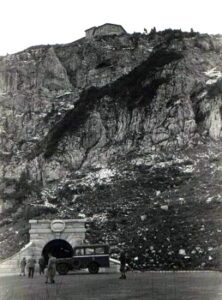
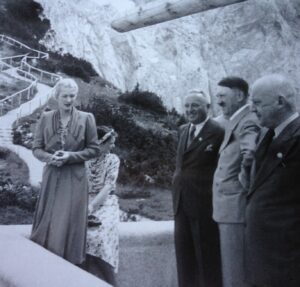 kitchen, but it was never used to cook meals…instead meals were prepared in town and taken to the kitchen on the mountain top to be reheated. Another extravagancy was the heated floors, with heating required for at least two days before visitors arrived. A MAN submarine diesel engine and an electrical generator were installed in an underground chamber close to the main entrance, to provide back-up power. Much of the furniture was designed by Paul László.
kitchen, but it was never used to cook meals…instead meals were prepared in town and taken to the kitchen on the mountain top to be reheated. Another extravagancy was the heated floors, with heating required for at least two days before visitors arrived. A MAN submarine diesel engine and an electrical generator were installed in an underground chamber close to the main entrance, to provide back-up power. Much of the furniture was designed by Paul László.
Hitler first visited on September 16, 1938, and returned to inaugurate it on April 20, 1939, his 50th birthday…though supposedly, it was not intended as a birthday gift. There are two ways to approach and enter the building…the road and the Kehlsteinhaus elevator. Hitler did not trust the elevator, continually expressed his reservations of its safety, and disliked using it. His biggest fear was that the elevator’s winch mechanism on the roof would attract a lightning strike. Bormann took great pains to never mention the two serious lightning strikes that occurred during construction. For a man who was supposedly such a “brave leader,” Hitler sure was afraid of a lot of things. The Kehlsteinhaus lies several miles directly above the Berghof, Hitler’s summer home. In a rare diplomatic engagement, Hitler received departing French ambassador André François-Poncet on October 18, 1938, there. It was he who actually came up with the name “Eagle’s Nest” for the building while later describing the visit. Since then, the name has remained. A wedding reception for Eva Braun’s sister Gretl was held there following her marriage to Hermann Fegelein on June 3, 1944. While Hitler more often than not left the entertaining duties to others, he believed the house presented an excellent opportunity to entertain important and impressionable guests. Often referred to as the “D-Haus,” short for “Diplomatic Reception House,” the Kehlsteinhaus is often combined with the teahouse on Mooslahnerkopf Hill near the Berghof, which Hitler walked to daily after lunch. Later, after the war, the teahouse was demolished by the Bavarian government, due to its connection to Hitler.
The Allies tried to bomb the Kehlsteinhaus in the April 25, 1945 Bombing of Obersalzberg, but the little house did not make an easy target for the force of 359 Avro Lancasters and 16 de Havilland Mosquitoes, which were sent to bomb Kehlsteinhaus, but instead, severely damaged the Berghof area. Undamaged in the April 25 bombing raid, the Kehlsteinhaus was subsequently used by the Allies as a military command post until 1960, when it was handed back to the State of Bavaria. The road to the Kehlsteinhaus has been closed to private vehicles since 1952 because it is too dangerous, but the house can be reached on foot (in two hours) from Obersalzberg, or by bus from the Documentation Center there. The Documentation Centre currently directs visitors to the coach station where tickets are purchased. The buses have special modifications to take on a 
 slight angle, as the steep road leading to the peak is too steep for regular vehicles. The Kehlsteinhaus itself does not mention much about its past, except in the photos displayed and described along the wall of the sun terrace that documents its pre-construction condition until now. The lower rooms of the structure are not part of the restaurant but can be visited with a guide. They offer views of the building’s past through plate-glass windows, including graffiti left by Allied troops that is still visible in the surrounding woodwork. The red Italian marble fireplace remains damaged by Allied souvenir hunters, though this was later halted by signage posted that the building was US government property, and damage to it was cause for disciplinary action. Hitler’s small study is now a storeroom for the cafeteria. Thanks to the Ramsey family for taking us along.
slight angle, as the steep road leading to the peak is too steep for regular vehicles. The Kehlsteinhaus itself does not mention much about its past, except in the photos displayed and described along the wall of the sun terrace that documents its pre-construction condition until now. The lower rooms of the structure are not part of the restaurant but can be visited with a guide. They offer views of the building’s past through plate-glass windows, including graffiti left by Allied troops that is still visible in the surrounding woodwork. The red Italian marble fireplace remains damaged by Allied souvenir hunters, though this was later halted by signage posted that the building was US government property, and damage to it was cause for disciplinary action. Hitler’s small study is now a storeroom for the cafeteria. Thanks to the Ramsey family for taking us along.

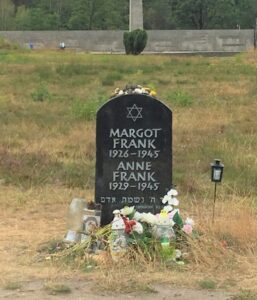 On June 12, 1942, Anne Frank, was a young Jewish girl living in Amsterdam. It was her thirteenth birthday, and as a gift, she was given a diary. Diaries have long been a big deal for girls. I know very few of those in my generation who didn’t have one. Most of those who received them, did little with them. I know that my diary (which I still have, by the way) contains mostly the gibberish of a young girl…mostly bored with the idea of journaling the meager events of my life…or at least that is how I saw them at the time. Looking back, I wish I had maybe taken the whole journaling/diary thing more seriously, because my life, while not as intense as that of Anne Frank, did have meaning, and those events that might have been considered important to my children, grandchildren, and great grandchildren have been, for the most part, lost to the forgetfulness of childhood.
On June 12, 1942, Anne Frank, was a young Jewish girl living in Amsterdam. It was her thirteenth birthday, and as a gift, she was given a diary. Diaries have long been a big deal for girls. I know very few of those in my generation who didn’t have one. Most of those who received them, did little with them. I know that my diary (which I still have, by the way) contains mostly the gibberish of a young girl…mostly bored with the idea of journaling the meager events of my life…or at least that is how I saw them at the time. Looking back, I wish I had maybe taken the whole journaling/diary thing more seriously, because my life, while not as intense as that of Anne Frank, did have meaning, and those events that might have been considered important to my children, grandchildren, and great grandchildren have been, for the most part, lost to the forgetfulness of childhood.
Many of us have heard of, read about, or seen the movie about the events of Anne Frank’s short life. One short month after receiving her diary, Anne and her family went into hiding from the Nazis in rooms behind her father’s office. Anne’s sister, Margot, received a call-up notice around 3pm on July 5, 1942. The Frank family had planned to go into hiding on July 16, 1942, but they decided to leave immediately so that Margot would not have to be deported to a “work camp.” The family left a false trail indicating that they had gone into hiding in Switzerland. According to Anne’s diary, Margot kept a diary of her own, but no trace of Margot’s diary has ever been found. This and her time in the hands of the Nazis was the main period of her diary, because as we know, Anne did not survive the Holocaust into which she and her family had been dragged. The hiding place was not discovered immediately, of course, and for the next two years, the Franks and four other families were hidden, fed, and cared for by Gentile friends. They lived in an annex, whose entrance was hidden behind a moveable bookcase. Following a tip in 1944, the families were discovered by the Gestapo. The Franks were taken to Auschwitz, where Anne’s mother died. Friends in Amsterdam searched the rooms and found Anne’s diary hidden away. They had hoped to save any personal items, so they could be returned to the family, should any of them survive.
Anne and her sister were sent to another camp, Bergen-Belsen, where Anne died a month before the war ended. Anne’s father survived Auschwitz, and after much soul searching, he published Anne’s diary in 1947 as “The Diary of a Young Girl.” The book has been translated into more than 60 languages. Had it not been for World War II, the Holocaust, and Anne’s tragic death from Typhus in the Bergen-Belsen concentration camp in February 1945, the diary would have most likely have been published, or even written in the way that it was. 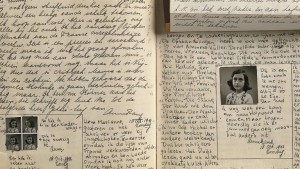
 The reality is that most diaries aren’t immensely interesting. Most are written by young girls with drama queen emotions, who are bored with their lives, because they are certain that nothing cool happens. Anne’s diary was interesting, because she wasn’t sure how long her life would be, and she wanted to know everything…before it was too late.
The reality is that most diaries aren’t immensely interesting. Most are written by young girls with drama queen emotions, who are bored with their lives, because they are certain that nothing cool happens. Anne’s diary was interesting, because she wasn’t sure how long her life would be, and she wanted to know everything…before it was too late.
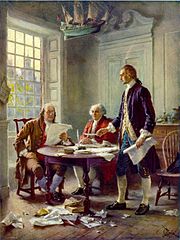 When the British Colonies, also known as the Thirteen Colonies or the early United States, were founded in the 1600s, the colonies were left to govern themselves for the most part. The land was really an expansion of power for Britain. Nevertheless, there were wars that took place in the new land and with them the costs of war, and because the colonies were owned by the British government, the cost of war fell on them. The cost of victory in the 1754 to 1763 French and Indian War and the 1756 to 1763 Seven Years’ War left the British government deeply in debt. The wars were fought in the colonies, but were equipped and populated with the British forces stationed there, at the cost of millions of British funds. The British government decided to impose The Stamp Act and Townshend Acts to pay for the wars, which provoked colonial opposition and unrest, leading to the 1770 Boston Massacre and 1773 Boston Tea Party. Then, came the Intolerable Acts, meant to punish the Massachusetts colonists for their defiance in the Tea Party protest in reaction to changes in taxation by the British Government, in spring 1774 upon Massachusetts. It was enough. These acts took away self-governance and rights that Massachusetts had enjoyed since its founding, and triggered outrage and indignation in the Thirteen Colonies, and twelve colonies sent delegates to the First Continental Congress, from September 5, 1774 to October 26, 1774. Their goal was to draft a petition to the King and organize a boycott of British goods. It was these acts…the acts that took away self-governance and other rights that triggered outrage and indignation in the Thirteen Colonies. We have often heard it called “taxation without representation” and it would never be tolerated. This nation had tasted freedom, and would never go back. These acts were key developments in the outbreak of the American Revolutionary War in April 1775.
When the British Colonies, also known as the Thirteen Colonies or the early United States, were founded in the 1600s, the colonies were left to govern themselves for the most part. The land was really an expansion of power for Britain. Nevertheless, there were wars that took place in the new land and with them the costs of war, and because the colonies were owned by the British government, the cost of war fell on them. The cost of victory in the 1754 to 1763 French and Indian War and the 1756 to 1763 Seven Years’ War left the British government deeply in debt. The wars were fought in the colonies, but were equipped and populated with the British forces stationed there, at the cost of millions of British funds. The British government decided to impose The Stamp Act and Townshend Acts to pay for the wars, which provoked colonial opposition and unrest, leading to the 1770 Boston Massacre and 1773 Boston Tea Party. Then, came the Intolerable Acts, meant to punish the Massachusetts colonists for their defiance in the Tea Party protest in reaction to changes in taxation by the British Government, in spring 1774 upon Massachusetts. It was enough. These acts took away self-governance and rights that Massachusetts had enjoyed since its founding, and triggered outrage and indignation in the Thirteen Colonies, and twelve colonies sent delegates to the First Continental Congress, from September 5, 1774 to October 26, 1774. Their goal was to draft a petition to the King and organize a boycott of British goods. It was these acts…the acts that took away self-governance and other rights that triggered outrage and indignation in the Thirteen Colonies. We have often heard it called “taxation without representation” and it would never be tolerated. This nation had tasted freedom, and would never go back. These acts were key developments in the outbreak of the American Revolutionary War in April 1775.
The Revolutionary War was not going to be a short war. It would rage from April 19, 1775 to September 3, 1783…eight long years. For seven years after the United States Declaration of Independence was adopted by the Second Continental Congress at its meeting in Philadelphia, Pennsylvania, on July 4, 1776, the war still raged on. I don’t suppose any nation would want to simply lay down its control, but the reality is that Britain had lost its control many years before, and it was time to cut their losses and go home.
It was on June 11, 1776, that the Continental Congress made the decision and selected Thomas Jefferson of Virginia, John Adams of Massachusetts, Benjamin Franklin of Pennsylvania, Roger Sherman of Connecticut and Robert R. Livingston of New York to draft our Declaration of Independence. That moment truly sealed the fate of the Britain ownership of this nation. The words they penned would be taught in schools, put on documents, t-shirts, decals, and many other forms of media. Because John Adams knew of Thomas Jefferson’s prowess with a pen, he urged him to author the first draft of the document, which was then carefully revised by Adams and Franklin before being given to Congress for review on June 28. I don’t know how many have ever read the entire Declaration of Independence, but I have chosen to place it in its unedited entirety, because I think we need to know why our founding fathers fought so hard for our independence. The 4th of July is not about picnics and fireworks, it is about freedom, and we must never forget that…nor the five men who wrote it and the entire congress who signed it.
The Declaration of Independence
“When in the Course of human events, it becomes necessary for one people to dissolve the political bands which have connected them with another, and to assume among the powers of the earth, the separate and equal station to which the Laws of Nature and of Nature’s God entitle them, a decent respect to the opinions of mankind requires that they should declare the causes which impel them to the separation.
We hold these truths to be self-evident, that all men are created equal, that they are endowed by their Creator with certain unalienable Rights, that among these are Life, Liberty and the pursuit of Happiness.–That to secure these rights, Governments are instituted among Men, deriving their just powers from the consent of the governed, –That whenever any Form of Government becomes destructive of these ends, it is the Right of the People to alter or to abolish it, and to institute new Government, laying its foundation on such principles and organizing its powers in such form, as to them shall seem most likely to effect their Safety and Happiness. Prudence, indeed, will dictate that Governments long established should not be changed for light and transient causes; and accordingly all experience hath shewn, that mankind are more disposed to suffer, while evils are sufferable, than to right themselves by abolishing the forms to which they are accustomed. But when a long train of abuses and usurpations, pursuing invariably the same Object evinces a design to reduce them under absolute Despotism, it is their right, it is their duty, to throw off such Government, and to provide new Guards for their future security.–Such has been the patient sufferance of these Colonies; and such is now the necessity which constrains them to alter their former Systems of Government. The history of the present King of Great Britain is a history of repeated injuries and usurpations, all having in direct object the establishment of an absolute Tyranny over these States. To prove this, let Facts be submitted to a candid world.
He has refused his Assent to Laws, the most wholesome and necessary for the public good.
He has forbidden his Governors to pass Laws of immediate and pressing importance, unless suspended in their operation till his Assent should be obtained; and when so suspended, he has utterly neglected to attend to them.
He has refused to pass other Laws for the accommodation of large districts of people, unless those people would relinquish the right of Representation in the Legislature, a right inestimable to them and formidable to tyrants only.
He has called together legislative bodies at places unusual, uncomfortable, and distant from the depository of their public Records, for the sole purpose of fatiguing them into compliance with his measures.
He has dissolved Representative Houses repeatedly, for opposing with manly firmness his invasions on the rights of the people.
He has refused for a long time, after such dissolutions, to cause others to be elected; whereby the Legislative powers, incapable of Annihilation, have returned to the People at large for their exercise; the State remaining in the mean time exposed to all the dangers of invasion from without, and convulsions within.
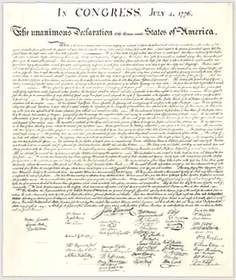
He has endeavoured to prevent the population of these States; for that purpose obstructing the Laws for Naturalization of Foreigners; refusing to pass others to encourage their migrations hither, and raising the conditions of new Appropriations of Lands.
He has obstructed the Administration of Justice, by refusing his Assent to Laws for establishing Judiciary powers.
He has made Judges dependent on his Will alone, for the tenure of their offices, and the amount and payment of their salaries.
He has erected a multitude of New Offices, and sent hither swarms of Officers to harrass our people, and eat out their substance.
He has kept among us, in times of peace, Standing Armies without the Consent of our legislatures.
He has affected to render the Military independent of and superior to the Civil power.
He has combined with others to subject us to a jurisdiction foreign to our constitution, and unacknowledged by our laws; giving his Assent to their Acts of pretended Legislation:
For Quartering large bodies of armed troops among us:
For protecting them, by a mock Trial, from punishment for any Murders which they should commit on the Inhabitants of these States:
For cutting off our Trade with all parts of the world:
For imposing Taxes on us without our Consent:
For depriving us in many cases, of the benefits of Trial by Jury:
For transporting us beyond Seas to be tried for pretended offences
For abolishing the free System of English Laws in a neighbouring Province, establishing therein an Arbitrary government, and enlarging its Boundaries so as to render it at once an example and fit instrument for introducing the same absolute rule into these Colonies:
For taking away our Charters, abolishing our most valuable Laws, and altering fundamentally the Forms of our Governments:
For suspending our own Legislatures, and declaring themselves invested with power to legislate for us in all cases whatsoever.
He has abdicated Government here, by declaring us out of his Protection and waging War against us.
He has plundered our seas, ravaged our Coasts, burnt our towns, and destroyed the lives of our people.
He is at this time transporting large Armies of foreign Mercenaries to compleat the works of death, desolation and tyranny, already begun with circumstances of Cruelty & perfidy scarcely paralleled in the most barbarous ages, and totally unworthy the Head of a civilized nation.
He has constrained our fellow Citizens taken Captive on the high Seas to bear Arms against their Country, to become the executioners of their friends and Brethren, or to fall themselves by their Hands.
He has excited domestic insurrections amongst us, and has endeavoured to bring on the inhabitants of our frontiers, the merciless Indian Savages, whose known rule of warfare, is an undistinguished destruction of all ages, sexes and conditions.
In every stage of these Oppressions We have Petitioned for Redress in the most humble terms: Our repeated Petitions have been answered only by repeated injury. A Prince whose character is thus marked by every act which may define a Tyrant, is unfit to be the ruler of a free people.
Nor have We been wanting in attentions to our Brittish brethren. We have warned them from time to time of attempts by their legislature to extend an unwarrantable jurisdiction over us. We have reminded them of the circumstances of our emigration and settlement here. We have appealed to their native justice and magnanimity, and we have conjured them by the ties of our common kindred to disavow these usurpations, which, would inevitably interrupt our connections and correspondence. They too have been deaf to the voice of justice and of consanguinity. We must, therefore, acquiesce in the necessity, which denounces our Separation, and hold them, as we hold the rest of mankind, Enemies in War, in Peace Friends.
We, therefore, the Representatives of the united States of America, in General Congress, Assembled, appealing to the Supreme Judge of the world for the rectitude of our intentions, do, in the Name, and by Authority of the good People of these Colonies, solemnly publish and declare, That these United Colonies are, and of Right  ought to be Free and Independent States; that they are Absolved from all Allegiance to the British Crown, and that all political connection between them and the State of Great Britain, is and ought to be totally dissolved; and that as Free and Independent States, they have full Power to levy War, conclude Peace, contract Alliances, establish Commerce, and to do all other Acts and Things which Independent States may of right do. And for the support of this Declaration, with a firm reliance on the protection of divine Providence, we mutually pledge to each other our Lives, our Fortunes and our sacred Honor.”
ought to be Free and Independent States; that they are Absolved from all Allegiance to the British Crown, and that all political connection between them and the State of Great Britain, is and ought to be totally dissolved; and that as Free and Independent States, they have full Power to levy War, conclude Peace, contract Alliances, establish Commerce, and to do all other Acts and Things which Independent States may of right do. And for the support of this Declaration, with a firm reliance on the protection of divine Providence, we mutually pledge to each other our Lives, our Fortunes and our sacred Honor.”

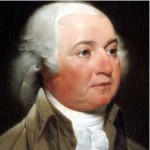 No country can truly be secure without an army, and the Thirteen Colonies (now the United States) was no different. After the beginning of the Revolutionary War, John Adams began to see the value of an army, so on June 10, 1775, he proposed to Congress, at a meeting in Philadelphia, that the men laying siege to Boston should be considered a Continental Army led by a general. The men who were mostly from New England, had armed themselves and rushed to surround British forces in Boston following the Battle of Lexington and Concord. Adams, who was representing Massachusetts, realized that the military effort would only succeed if the British thought the colonies were united. To achieve his united feel, Adams suggested than they appoint George Washington of Virginia, to command the Continental forces, despite the fact that New Englanders were used to fighting in local militias under officers elected from among their own ranks.
No country can truly be secure without an army, and the Thirteen Colonies (now the United States) was no different. After the beginning of the Revolutionary War, John Adams began to see the value of an army, so on June 10, 1775, he proposed to Congress, at a meeting in Philadelphia, that the men laying siege to Boston should be considered a Continental Army led by a general. The men who were mostly from New England, had armed themselves and rushed to surround British forces in Boston following the Battle of Lexington and Concord. Adams, who was representing Massachusetts, realized that the military effort would only succeed if the British thought the colonies were united. To achieve his united feel, Adams suggested than they appoint George Washington of Virginia, to command the Continental forces, despite the fact that New Englanders were used to fighting in local militias under officers elected from among their own ranks.
Five days later, on June 15th, Adams formally nominated George Washington as commander in chief of the Continental Army. Washington accepted the post on June 16th, and on June 17th, with no rest for the troops, the newly named army fought the Battle of Bunker Hill. John Adam’s wife, Abigail, and son, John Quincy Adams, watched the battle from their hometown of Braintree.
Just as the British had discovered the difficulties of waging war with rowdy and uncontrollable Yankees for soldiers during the Seven Years’ War, Washington was equally unimpressed when he met his supposed army. Just as the British had, he saw “stupidity” among the enlisted men, who were used to the easy familiarity of being commanded by neighbors. Upon arrival outside Boston, General George Washington organized this body of more than 22,000 men, known as the Main Army, into three divisions of two brigades each, promptly 
 insisting that the officers behave with decorum and the enlisted men with respect. Washington had some success with this first Continental Army, but when the New Englanders went home to their farms at the end of 1775, General Washington had to start fresh with new recruits in 1776. In retrospect, I’m sure Washington had better control over the second Continental Army, because they didn’t know any other leadership style. George Washington remained the commander of the Continental Army until the end of the Revolutionary War.
insisting that the officers behave with decorum and the enlisted men with respect. Washington had some success with this first Continental Army, but when the New Englanders went home to their farms at the end of 1775, General Washington had to start fresh with new recruits in 1776. In retrospect, I’m sure Washington had better control over the second Continental Army, because they didn’t know any other leadership style. George Washington remained the commander of the Continental Army until the end of the Revolutionary War.

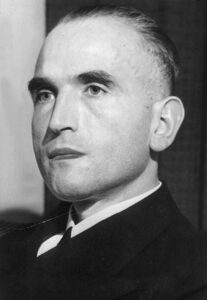 Not everyone was surprised at the coming murders of the Jews during the Holocaust. People hoped that the rumors were wrong, and that maybe they war would end before things got that bad, but most knew that if something wasn’t done, things were going to get ugly at some point. In the end, the non-Jews were forced to make a decision…take a stand, or stand by and watch millions of people die.
Not everyone was surprised at the coming murders of the Jews during the Holocaust. People hoped that the rumors were wrong, and that maybe they war would end before things got that bad, but most knew that if something wasn’t done, things were going to get ugly at some point. In the end, the non-Jews were forced to make a decision…take a stand, or stand by and watch millions of people die.
A Danish ambulance driver in Copenhagen, Denmark huddled over a local phone book, circling Jewish names. He had heard that all of Denmark’s Jews were going to be deported, and he knew this was his “moment of truth.” He knew he had to warn every one of these people, before it was too late. He wasn’t alone. Hundreds of everyday Danes sprang into action in late September 1943. They all had one collective goal in mind…to help their Jewish friends and neighbors escape the horrors they knew were coming.
The plan was amazing. Hundreds of people helped Jewish people sneak out of Copenhagen and other towns. They quickly headed toward Danish shores and into the crowded holds of tiny fishing boats. Denmark was about to pull off a spectacular feat…the rescue of the vast majority of its Jewish population. Within a few hours of learning that the Nazis intended to wipe out Denmark’s Jews, nearly all of the Danish Jews had gone into hiding. Within a few days, most of them had escaped Denmark to neutral Sweden. In the end, over 90% of the Danish Jews were snatched out of the hands of Adolf Hitler and his goons, and it was all thanks to ordinary Danes, most of whom refused to accept credit for their ations. I call it a miracle, and the participants…angels!!
The German forces invaded Denmark in April 1940. The Danish government, rather than suffer an inevitable defeat by fighting back, didn’t resist the Nazi hoard. Instead, the Danish government negotiated with the Germans to insulate Denmark from the occupation. In the negotiations, the Nazis promised to be lenient with the country, respecting its rule and neutrality…like they would ever keep that promise. By 1943, tensions had reached a breaking point. Workers began to sabotage the war effort and the Danish resistance ramped up their efforts to fight the Nazis. In response, the Nazis told the Danish government to institute a harsh curfew, forbid public assemblies, and punish saboteurs with death. The Danish government refused, so the Nazis dissolved the government and established martial law.
The Nazis had always been a forbidding presence in Denmark, but now they began really making their presence known. Like everywhere else, the Danish Jews were to be their first targets. The Holocaust was spreading across occupied Europe, and without the protection of the Danish government, which had done its best to shield Jews from the Nazis after realizing that the Nazi promises were worthless, Denmark’s Jewish population was in danger. In late September 1943, the Nazis got word from Berlin that it was time to rid Denmark of its Jews. As was typical for the Nazis, they planned the raid to coincide with a significant Jewish holiday…in this case, Rosh Hashanah, the Jewish New Year. Marcus Melchior, a rabbi, got word of the coming raid, and in Copenhagen’s main synagogue, he interrupted services. Melchior said, “We have no time now to continue prayers. We have news that this coming Friday night, the night between the first and second of October, the Gestapo will come and arrest all Danish Jews.” Melchior told the congregation that the Nazis had the names and addresses of every Jew in Denmark, and urged them to flee or hide.
Denmark’s panicked Jewish population sprang into action, but against all odds, so did its Gentiles. Hundreds of people spontaneously began to tell Jews about the upcoming action and help them go into hiding. It was, in the words of historian Leni Yahil, “a living wall raised by the Danish people in the course of one night.” It was amazing, and it can only be classified as a miracle. The Gentile people of Denmark were taking their lives into their own hands too, but they did not care, nor did they consider the cost. All they saw was the horrific injustice of the Nazi plan, and they could not abide by it.
No pre-existing plan had been put in place by the Danish people, but the Jewish people needed their help and nearby Sweden offered an obvious haven to those who were about to be deported. Sweden was still neutral and unoccupied by the Nazis, and they were a fierce ally. It was also close. Some areas of Denmark were just over three miles away from the Swedish coast. Once across, the Jews could apply for asylum there. The Danish culture has long been seafaring, in fact since Viking times. That said, there were plenty of fishing boats and other vessels to spirit Jews toward Sweden. But Danish fishermen were worried about losing their livelihoods and being punished by the Nazis if they were caught. So, rather than put their countrymen in peril, the resistance groups that swiftly formed to help the Jews managed to negotiate standard fees for Jewish passengers, then recruit volunteers to raise the money for passage. That way the fishermen got paid for their risk. The average price of passage to Sweden cost up to a third of a worker’s annual salary.
As often happens, there were fishermen who took advantage of the situation, but more who refused pay, acting without regard to personal gain. Boats were used for some 7,000 Danish Jews who fled to safety in neighboring Sweden. Passage was a terrifying ordeal. Jews gathered in fishing towns, hid on small boats, usually 10 to 15 at a time, giving their children sleeping pills and sedatives to keep them from crying, and struggled to maintain control during the hour-long crossing. Some boats, like the Gerda III, were boarded by Gestapo patrols. Gas came from strange sources. Careful rationing by groups like the “Elsinore Sewing Club,” a resistance unit, helped a few hundred Jews make the crossing.
There were failures sadly. In Gilleleje, a small fishing town, hundreds of refugees were being cared for by locals, when the Gestapo arrived. A collaborator had betrayed a group of Jews hiding in the town church’s attic. Eighty Jews were arrested. Others never got word of the upcoming deportations or were too old or incapacitated to seek help. In the end, about 500 Danish Jews were deported to the Theresienstadt ghetto. Of the 500 who were deported to the Theresienstadt ghetto, only 51 did not survive the Holocaust. Still, it was the most successful action of its kind during the Holocaust. Some 7,200 Danish Jews were ferried to Sweden.
The rescue was not without German help either. God can reach people even in such a corrupt government. Werner Best, the German who had been placed in charge of Denmark, apparently tipped off some Jews to the 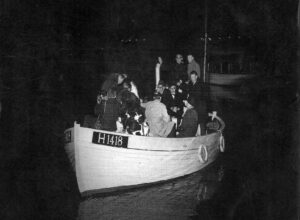
 upcoming action and subtly undermined the Nazis’ attempts to stop the Danes from helping Danish Jews. Another helpful factor was that Denmark was one of the only places in Europe that had successfully integrated its Jewish population. Although there was anti-Semitism in Denmark before and after the Holocaust, the Nazis’ war on Jews was largely viewed as a war against Denmark itself.
upcoming action and subtly undermined the Nazis’ attempts to stop the Danes from helping Danish Jews. Another helpful factor was that Denmark was one of the only places in Europe that had successfully integrated its Jewish population. Although there was anti-Semitism in Denmark before and after the Holocaust, the Nazis’ war on Jews was largely viewed as a war against Denmark itself.

